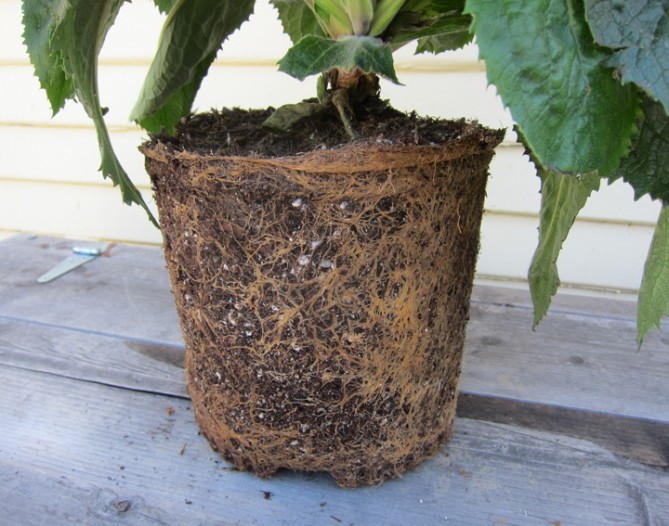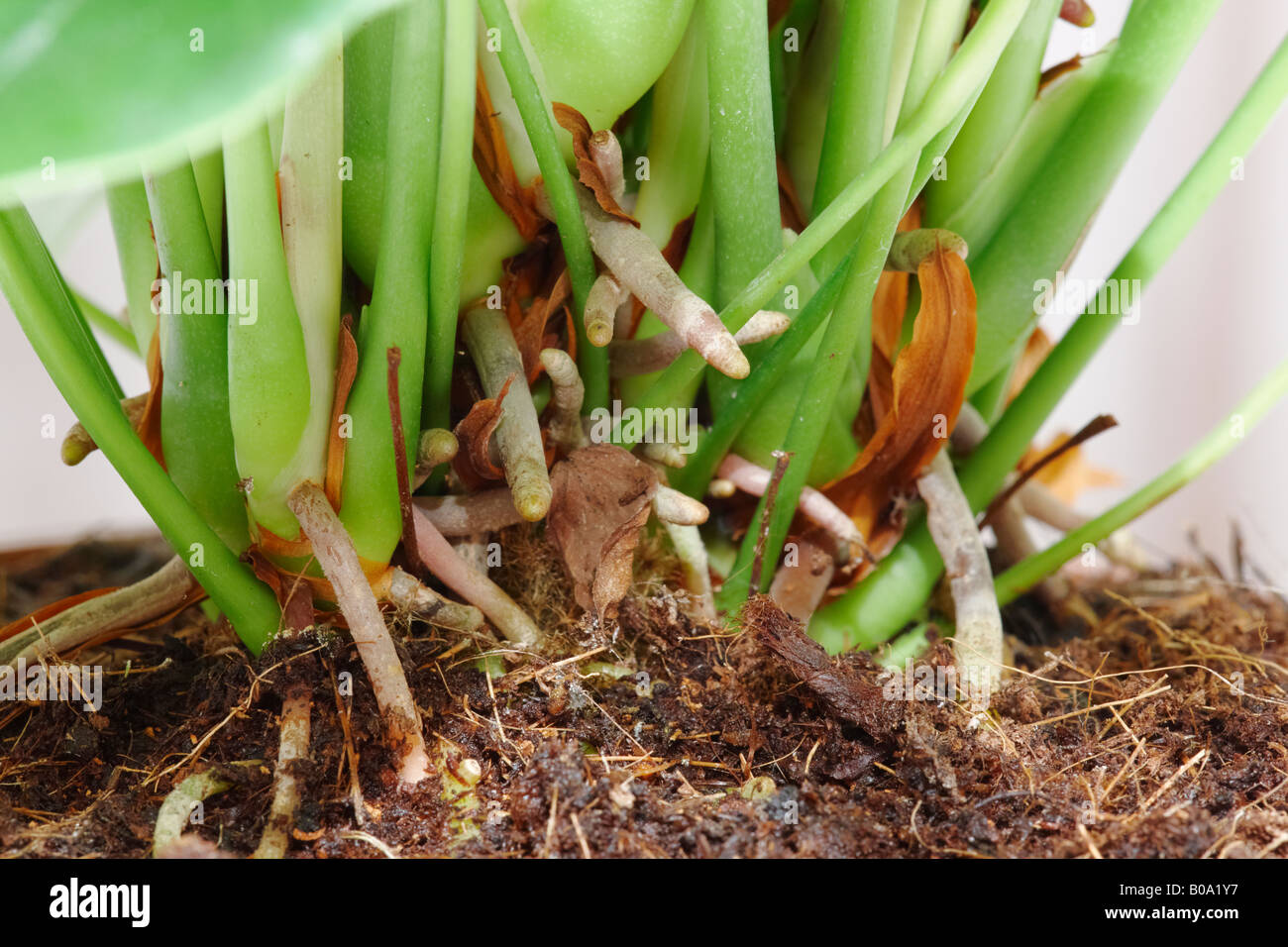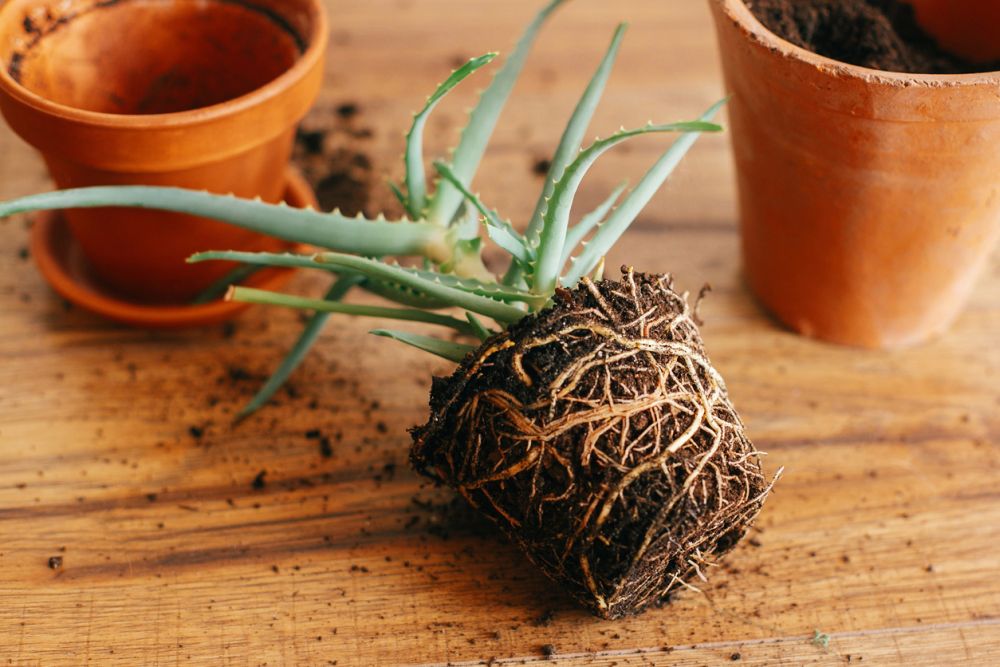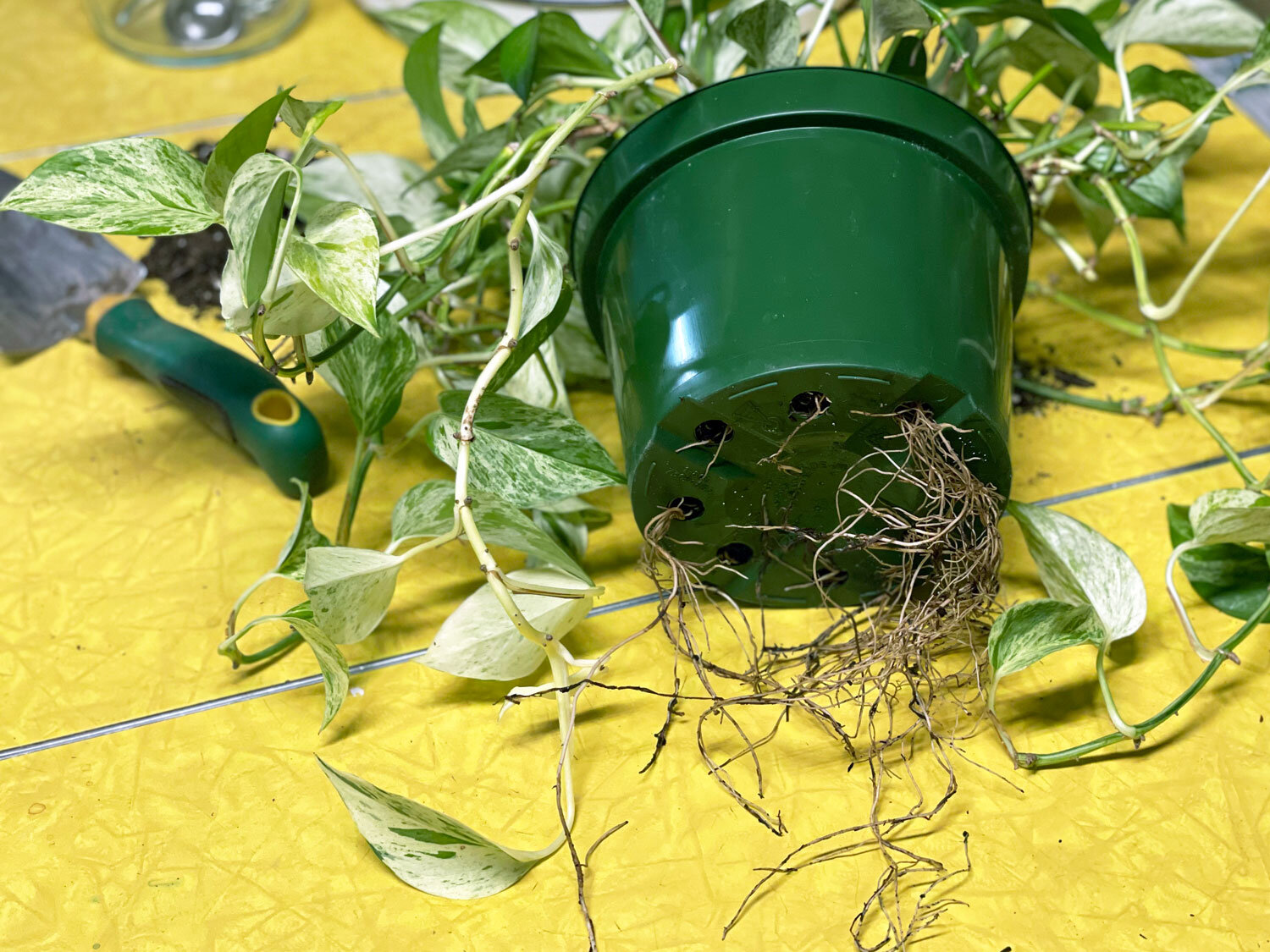Understanding the Anthurium Plant’s Unique Needs
Anthurium plants are epiphytes, meaning they have adapted to thrive in environments with limited root space. In their natural habitat, anthuriums grow on other plants, such as trees, and absorb moisture and nutrients through their leaves and roots. This unique characteristic allows them to survive in areas with poor soil quality and limited water availability. As a result, anthuriums have developed a distinct set of needs that differ from other houseplants.
One of the most important factors to consider when caring for an anthurium plant is its root system. Anthuriums have a relatively small root system compared to other plants, which means they don’t require a lot of space to grow. In fact, anthuriums can thrive in pots that are slightly root-bound, as long as they receive adequate water and nutrients. However, it’s essential to understand the difference between a healthy, root-bound state and a neglected, pot-bound state.
When an anthurium plant is root-bound, it means the roots have filled the pot and need more room to grow. This can be beneficial for the plant, as it encourages the roots to grow more densely and absorb more nutrients. On the other hand, a pot-bound state occurs when the plant has outgrown its container and needs to be repotted. If left unaddressed, a pot-bound state can lead to reduced growth, yellowing leaves, and decreased flower production.
So, does anthurium like to be root bound? The answer is yes, but only to a certain extent. Anthuriums can benefit from a slightly root-bound state, but they still require regular watering, fertilization, and pruning to thrive. By understanding the unique needs of your anthurium plant, you can provide the best possible care and encourage healthy growth and flowering.
What is Root Bound and How Does it Affect Anthurium Plants?
When a plant becomes root-bound, it means the roots have filled the pot and need more room to grow. This can happen when the plant has outgrown its container or when the soil has broken down over time. For anthurium plants, being root-bound can have both positive and negative effects.
On the one hand, a root-bound state can encourage anthurium plants to produce more flowers. When the roots are confined, the plant focuses its energy on producing blooms rather than growing new roots. This can lead to a more abundant and vibrant display of flowers. Additionally, a root-bound state can help to prevent the plant from becoming too leggy or sprawling.
On the other hand, a root-bound state can also lead to reduced growth and decreased plant health. If the roots become too crowded, they can start to rot, leading to a decline in plant vigor. Furthermore, a root-bound state can make the plant more susceptible to pests and diseases, as the confined roots can become a breeding ground for unwanted organisms.
So, does anthurium like to be root bound? The answer is complex. While a root-bound state can have benefits, such as increased flower production, it’s essential to ensure that the plant is not becoming too pot-bound. A pot-bound state occurs when the plant has outgrown its container and needs to be repotted. If left unaddressed, a pot-bound state can lead to serious health problems for the plant.
To determine whether your anthurium plant is root-bound, check for signs such as slow growth, yellowing leaves, or roots growing out of the pot. If you notice any of these symptoms, it may be time to consider repotting your plant. However, before making any changes, it’s essential to understand the potential benefits and drawbacks of a root-bound state and how to care for your anthurium plant accordingly.
How to Determine if Your Anthurium is Root Bound
Determining whether your anthurium plant is root-bound can be a bit tricky, but there are several signs to look out for. One of the most obvious signs is slow growth. If your anthurium plant is not producing new leaves or flowers, it may be a sign that the roots have filled the pot and need more room to grow.
Another sign of a root-bound anthurium plant is roots growing out of the pot. If you notice roots growing out of the drainage holes or circling around the inside of the pot, it’s a clear indication that the plant needs to be repotted. You may also notice that the plant is top-heavy or unstable, which can be a sign that the roots are not getting enough room to grow.
Visual cues can also help you determine if your anthurium plant is root-bound. Check for signs such as yellowing leaves, droopy stems, or a general decline in plant health. These can be indicative of a root-bound state, but they can also be caused by other factors such as over-watering or under-fertilization.
To confirm whether your anthurium plant is root-bound, you can gently remove the plant from its pot and inspect the roots. If the roots are circling around the inside of the pot or growing out of the drainage holes, it’s a clear indication that the plant needs to be repotted.
It’s essential to note that anthurium plants can thrive in a slightly root-bound state, but they still require regular watering, fertilizing, and pruning to maintain optimal health. By monitoring your plant’s response to a root-bound state and adjusting your care accordingly, you can help your anthurium plant thrive and produce beautiful flowers.
The Benefits of a Root-Bound State for Anthurium Plants
While a root-bound state can be detrimental to some plants, anthuriums can actually benefit from this condition. One of the primary advantages of a root-bound state for anthurium plants is increased flower production. When the roots are confined, the plant focuses its energy on producing blooms rather than growing new roots. This can lead to a more abundant and vibrant display of flowers.
Another benefit of a root-bound state for anthurium plants is improved root development. When the roots are forced to grow in a smaller space, they become more dense and robust. This can lead to a stronger, more resilient plant that is better equipped to handle stress and disease.
In addition to these benefits, a root-bound state can also help to control the size of the plant. Anthuriums can grow quite large, but a root-bound state can help to keep them compact and manageable. This makes them ideal for indoor containers or small gardens.
It’s worth noting that not all anthurium plants will benefit from a root-bound state. Some varieties may require more room to grow, and a root-bound state can actually be detrimental to their health. However, for many anthurium plants, a root-bound state can be a beneficial condition that promotes healthy growth and flowering.
So, does anthurium like to be root bound? The answer is yes, but only to a certain extent. While a root-bound state can have benefits, it’s essential to ensure that the plant is not becoming too pot-bound. A pot-bound state can lead to reduced growth, yellowing leaves, and decreased flower production. By finding the perfect balance between root growth and pot size, you can help your anthurium plant thrive and produce beautiful flowers.
How to Care for a Root-Bound Anthurium Plant
Caring for a root-bound anthurium plant requires attention to its specific needs. One of the most important things to consider is watering. A root-bound plant may require less water than a plant with a larger root system, as the roots are not able to absorb as much moisture. However, it’s still essential to ensure the soil is consistently moist, but not waterlogged.
Fertilizing is also crucial for a root-bound anthurium plant. A balanced fertilizer can help promote healthy growth and flowering, but be careful not to over-fertilize, as this can cause more harm than good. A good rule of thumb is to fertilize sparingly, but regularly, to provide the plant with the nutrients it needs.
Pruning is another important aspect of caring for a root-bound anthurium plant. Pruning can help control the size of the plant, promote healthy growth, and encourage flowering. Remove any dead or dying leaves or stems, and cut back overgrown branches to maintain the plant’s shape.
In addition to these care tips, it’s also essential to monitor the plant’s response to its root-bound state. Keep an eye out for signs of stress, such as yellowing leaves or reduced growth, and adjust your care accordingly. By providing the right care and attention, you can help your anthurium plant thrive, even in a root-bound state.
So, does anthurium like to be root bound? While a root-bound state can have its benefits, it’s essential to ensure the plant is receiving the right care and attention. By following these care tips and monitoring the plant’s response, you can help your anthurium plant thrive and produce beautiful flowers.
When to Repot a Root-Bound Anthurium Plant
While a root-bound state can be beneficial for anthurium plants, there comes a time when the plant needs to be repotted. So, how do you know when it’s time to repot your anthurium plant? Here are some signs to look out for:
One of the most obvious signs that your anthurium plant needs to be repotted is when the roots start growing out of the pot. This can happen when the plant has outgrown its container and needs more room to expand its root system. Another sign is when the plant starts to show signs of nutrient deficiency, such as yellowing leaves or slow growth.
When repotting a root-bound anthurium plant, it’s essential to choose the right pot and soil. A pot that is too large can cause the soil to become too wet, leading to root rot and other problems. On the other hand, a pot that is too small can cause the roots to become constricted, leading to reduced growth and flowering.
When selecting a pot, choose one that is only slightly larger than the original pot. This will give the roots enough room to grow without becoming too wet or constricted. Also, make sure the pot has good drainage holes to prevent waterlogged soil.
In terms of soil, choose a well-draining potting mix that is specifically designed for tropical plants like anthuriums. Avoid using regular garden soil, as it can compact and prevent proper drainage.
By repotting your anthurium plant at the right time and using the right pot and soil, you can help your plant thrive and produce beautiful flowers.
Common Mistakes to Avoid When Repotting a Root-Bound Anthurium
Repotting a root-bound anthurium plant can be a delicate process, and there are several common mistakes to avoid. One of the most common mistakes is over-handling the roots. When repotting, it’s essential to handle the roots gently and avoid damaging them. This can cause the plant to become stressed, leading to reduced growth and flowering.
Another common mistake is using too large of a pot. While it may seem counterintuitive, using a pot that is too large can cause the soil to become too wet, leading to root rot and other problems. Instead, choose a pot that is only slightly larger than the original pot, and make sure it has good drainage holes to prevent waterlogged soil.
Using the wrong type of soil is also a common mistake. Anthurium plants require a well-draining potting mix that is specifically designed for tropical plants. Avoid using regular garden soil, as it can compact and prevent proper drainage.
Finally, avoid repotting your anthurium plant too frequently. While it’s essential to repot the plant when it becomes root-bound, repotting too frequently can cause the plant to become stressed, leading to reduced growth and flowering. Instead, repot the plant only when necessary, and make sure to provide the right care and attention to help it thrive.
By avoiding these common mistakes, you can help your anthurium plant thrive and produce beautiful flowers. Remember to handle the roots gently, choose the right pot and soil, and avoid repotting too frequently. With the right care and attention, your anthurium plant can flourish and bring joy and beauty to your home.
Conclusion: Finding the Perfect Balance for Your Anthurium Plant
In conclusion, understanding the anthurium plant’s unique needs is crucial for providing the right care and attention. Finding the perfect balance between root growth and pot size is essential for promoting healthy growth and flowering. By monitoring your plant’s response to a root-bound state and adjusting your care accordingly, you can help your anthurium plant thrive and produce beautiful flowers.
Remember, anthurium plants are epiphytes and have adapted to thrive in environments with limited root space. While a root-bound state can have its benefits, it’s essential to ensure the plant is receiving the right care and attention. By following the tips and advice outlined in this article, you can help your anthurium plant flourish and bring joy and beauty to your home.
So, does anthurium like to be root bound? The answer is yes, but only to a certain extent. By understanding the anthurium plant’s unique needs and finding the perfect balance between root growth and pot size, you can help your plant thrive and produce beautiful flowers. With the right care and attention, your anthurium plant can flourish and bring joy and beauty to your home for years to come.


:max_bytes(150000):strip_icc()/GettyImages-1217106941-5bdb6790744d4b8793a94426ed641fb8.jpg)





